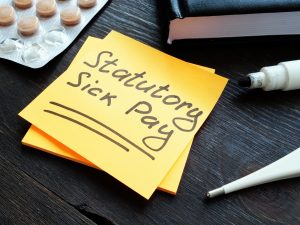In his Spring Budget Chancellor of the Exchequer, Rishi Sunak announced that the National Living Wage is rising to £8.91 an hour on 1 April – including all 23-year-old workers for the first time.
Introduction
The National Minimum Wage (NMW) is the minimum pay per hour most workers are entitled to by law. The rate depends largely on a worker’s age and if they are an apprentice. Those over 25 qualify for the National Living Wage instead.
Both rates are a legal requirement, and failing to meet them could result in the employer being fined and even featured in HMRC’s annual list of shame.
The rules currently state that an employee aged 25 or above (and not in the first year of an apprenticeship), should have an hourly of at least £8.72.
For the first time, after this Budget, the government’s highest rate will also include those aged 23 and over – people who previously fell under the lower wage bracket. This means 23 and 24-year-olds who are currently on £8.20 an hour will see their pay jump by 71p to £8.91 next month.
However, the increase is a U-turn on the 49p an hour promised last March. It equates to a pay rise of just 19p an hour for basic-rate workers – the majority of whom have already taken a 20% hit over the past year due to mandatory furlough.
The National Minimum Wage – which applies to those aged 16 and over – will also rise from April.
New Rates from April 2021
Aged 23 or over £8.92 per hour
Aged 21-22 £8.36 an hour
Aged 18-20 £6.56 an hour
Aged 16-17 £4.62 an hour
Apprentice £4.30 an hour
Note: Apprentices are only entitled to the apprentice rate if they’re either a) aged 19 or under or b) aged 19 or over and are in their first year of apprenticeship.
Living Wage Foundation rates
Some employees may get a higher rise because their employer is a member of the ‘Living Wage’ foundation.
This is a completely separate entity set up by the Living Wage Foundation. It’s also reviewed annually.
The latter is not a legal requirement, but more what campaigners believe workers should be earning (factoring in inflation and so on). Many employers – such as supermarkets – have chosen it in favour of it over the government’s guidelines and therefore pay their workers more.
Currently, the Living Wage stands at £9.50 an hour in the UK, or £10.85 in London. The rates apply to all those aged 18 or over.
National Insurance thresholds to change
As previously announced and legislated for in February 2021, in 2021-22 NICs thresholds will rise in accordance with the Consumer Price Index (CPI), bringing the NICs Primary Threshold / Lower Profits Limit to £9,568 and the Upper Earnings Limit (UEL) / Upper Profits Limit (UPL) to £50,270, in line with the income tax Higher Rate Threshold.
The UEL / UPL will then remain aligned with the HRT at £50,270 until April 2026. All other NICs thresholds will be considered and set at future budgets. NICs thresholds apply across the UK.
Someone who is employed and earns £30,000 a year would have had to pay £2,460 for Class 1 National Insurance in 2020-21. In 2021-22, they’ll have to pay £2,452.
For a self-employed worker with profits of £20,000, they would have had to pay £1,103.60 in 2020-21 through a mix of Class 2 and Class 4 contributions, but in 2021-22 they will pay £1,097.00.
SRC-Time are one of the South East’s leading accountancy firms in advising the self-employed and partnerships in all aspects of their tax affairs and we are able to assist in any issue raised above.
Our expert team is available to provide you with advice and can be contacted on 01273 326 556 or you can drop us an email at info@src-time.co.uk or speak with an account manager to get any process started.

